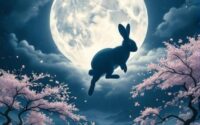The “World Egg” Creation Myth
The cosmic egg floats in primordial darkness across countless creation stories. Ancient civilizations separated by vast oceans and millennia somehow shared this singular vision—reality bursting from a shell. Hindu texts describe Brahma emerging from the golden Hiranyagarbha, while Chinese mythology speaks of Pangu breaking free from chaos. What compelled these disconnected cultures to envision the same origin? The answer lies deeper than coincidence.
Introduction

When ancient civilizations first gazed at the stars and pondered their origins, they often envisioned the universe emerging from a cosmic egg—a powerful symbol that appears in creation stories across continents and cultures. This primordial egg represents the universe’s potential before creation, containing all matter and energy in perfect unity. From Hindu scriptures to Finnish folklore, from Chinese mythology to Orphic traditions of ancient Greece, the world egg motif transcends geographical and temporal boundaries. It’s a concept that resonates with humanity’s deepest questions about existence. The egg symbolizes both beginning and completeness, offering ancient peoples a tangible metaphor for the incomprehensible moment when nothingness transformed into everything. This universal myth reveals how diverse cultures independently developed similar explanations for creation’s mystery.
Ancient Hindu Cosmic Egg Texts
Among the earliest and most detailed cosmic egg narratives, Hindu texts present the Hiranyagarbha—the golden womb or golden egg—as the source of all creation. The Rigveda describes this primordial egg floating in darkness for a cosmic year before splitting into heaven and earth. Later texts like the Brahmanda Purana elaborate on this concept, explaining how Brahma emerged from the egg’s halves to create the universe.
The Manusmriti provides specific details: the egg’s shell formed the mountains, its membranes became clouds and mist, and its veins transformed into rivers. The Chandogya Upanishad adds that Prajapati broke through this cosmic egg after a year of incubation. These texts don’t merely describe creation—they establish a theological framework where the universe’s birth mirrors biological reproduction through an egg’s development.
Notable Cases or Sightings

How do cosmic egg myths manifest across different cultures worldwide? The Finnish Kalevala describes Luonnotar’s cosmic egg birthing the universe from primordial waters. China’s Pangu emerges from a cosmic egg after 18,000 years, separating heaven and earth. Ancient Egypt‘s creation texts detail Ra hatching from a golden egg on the primeval mound. Greek Orphic traditions tell of Phanes bursting from the silver world egg created by Chronos.
These aren’t isolated cases. The Dogon people of Mali preserve oral traditions of Amma’s egg containing the universe’s blueprint. Japanese mythology features Amenominakanushi emerging from a cosmic egg in the void. Polynesian cultures describe Tangaroa breaking through his shell-like darkness. Each tradition independently developed remarkably similar cosmic egg imagery, suggesting humanity’s shared symbolic understanding of creation’s mysterious origins.
Common Theories or Explanations
While scholars debate the origins of widespread egg creation myths, several compelling theories attempt to explain their universal appeal. Carl Jung’s collective unconscious theory suggests these myths emerge from shared human psychological archetypes. The egg represents potential and wholeness, resonating across cultures without direct transmission.
Diffusion theorists argue that egg myths spread through ancient trade routes and cultural exchanges. They’ve traced similar narratives from Indo-European regions to Asia, suggesting a common source. Natural observation theory proposes that ancient peoples simply witnessed eggs hatching and extrapolated this process to cosmic creation. The egg’s perfect form and life-giving properties made it an obvious metaphor for universal origins. Some researchers believe agricultural societies developed these myths independently as they domesticated birds and observed reproductive cycles.
Frequently Asked Questions
How Does the World Egg Myth Compare to Big Bang Cosmology?
Both describe the universe emerging from a singular point. The egg’s shell breaking parallels cosmic expansion, while its contents becoming everything mirrors matter’s formation. Scientists note these myths surprisingly echo modern cosmology’s fundamental concepts.
Are There Any World Egg Creation Myths in Indigenous American Cultures?
Yes, several Indigenous American cultures feature cosmic egg myths. The Iroquois describe Sky Woman falling onto a turtle’s back carrying seeds from the celestial tree. Some Andean peoples tell of Viracocha emerging from Lake Titicaca’s primordial waters.
What Symbols or Artistic Representations Depict the Cosmic Egg Across Cultures?
Artists depict cosmic eggs as golden orbs, nested spheres, or ovoid mandalas. They’ll show serpents coiling around eggs, lotus flowers emerging from cracked shells, and yin-yang symbols within egg shapes representing primordial unity and duality.
Do Any Modern Religions Still Actively Incorporate World Egg Mythology?
Yes, Hinduism’s Brahmanda concept remains central to cosmological teachings. Orphic and neo-pagan traditions actively use egg symbolism in rituals. Some Wiccan groups incorporate cosmic egg imagery during spring equinox celebrations and creation-focused ceremonies.
How Did Trade Routes Influence the Spread of Cosmic Egg Myths?
Trade routes like the Silk Road enabled merchants and travelers to share cosmic egg stories between cultures. They’d exchange myths alongside goods, spreading Hindu, Chinese, and Persian egg creation tales across continents through oral traditions.


